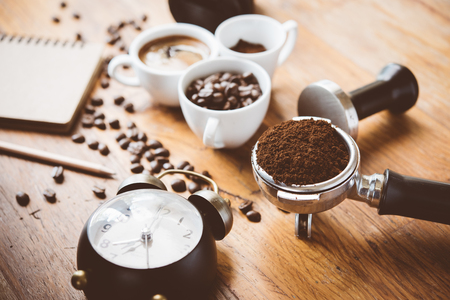Introduction to South Indian Filter Coffee Culture
When we talk about traditional filter coffee, the aroma instantly transports us to a typical South Indian kitchen where mornings begin with the sound of boiling milk, the gentle clinking of stainless steel tumblers, and the unmistakable scent of freshly brewed decoction. For generations, filter coffee has been an integral part of daily life in Tamil Nadu, Karnataka, Andhra Pradesh, and Kerala. Unlike instant coffee or Western espresso styles, South Indian filter coffee carries a legacy steeped in both cultural rituals and familial bonds. Its historical journey dates back to the colonial era when coffee plantations flourished in the hills of Chikmagalur and Coorg, bringing forth a beverage that soon became a symbol of hospitality and warmth in every household. More than just a drink, it is a tradition passed down through mothers and grandmothers, woven into everyday routines like early morning newspaper readings or leisurely evening chats. The ritual of preparing and sharing filter coffee is considered an art form, blending patience, skill, and affection—qualities cherished across Indian homes. Today, whether it’s sipped at home from a dabarah set or enjoyed in a bustling neighbourhood cafe, filter coffee continues to embody the soul of South Indian hospitality and remains a beloved symbol of togetherness.
2. Traditional Filter Coffee Equipment and Ingredients
In the heart of every South Indian kitchen, you will find a collection of tools and ingredients that are integral to making the quintessential filter coffee. This isn’t just a morning ritual; it’s an experience rooted in culture and tradition, passed down from generation to generation. Let’s take a closer look at the main equipment and components that shape this beloved beverage.
The Iconic ‘Dabara-Tumbler’ Set
The serving of traditional South Indian filter coffee is incomplete without the iconic ‘dabara-tumbler’. This set, usually made of stainless steel or brass, consists of two parts: the flat-bottomed dabara (a shallow bowl) and the tumbler (a cylindrical cup). The act of pouring hot coffee back and forth between the dabara and tumbler not only cools the drink to a perfect sipping temperature but also aerates it, creating a frothy layer on top—a hallmark of authentic South Indian filter coffee.
Brass Coffee Filters: The Heart of Brewing
The traditional brass filter is the backbone of Indian filter coffee brewing. It comprises two cylindrical containers—one with tiny perforations that sits atop the other. Ground coffee is placed in the upper chamber, hot water is poured over, and gravity does its magic, extracting a thick coffee decoction that drips into the lower chamber. This slow-drip method ensures a strong yet smooth flavour profile unique to Indian coffee culture.
Key Equipment at a Glance
| Equipment | Material | Purpose |
|---|---|---|
| Dabara-Tumbler | Stainless Steel / Brass | Serving & cooling coffee; aeration |
| Brass Filter | Brass / Stainless Steel | Brewing strong decoction |
The Unique Blend: Coffee and Chicory
No discussion about Indian filter coffee is complete without mentioning its signature blend—a mix of freshly ground coffee beans and chicory root. While the ratio can vary by region and personal preference, chicory is added to enhance body, aroma, and create a lingering aftertaste. Most households prefer sourcing their own beans from local roasters or grinding them fresh at home to preserve maximum flavour.
Typical Coffee-Chicory Ratio in Households
| Coffee (%) | Chicory (%) |
|---|---|
| 70-80% | 20-30% |
Together, these elements form the backbone of India’s filter coffee culture—from modest kitchens in Tamil Nadu to bustling cafés in Bengaluru. The reverence for equipment and ingredients reflects not only culinary tradition but also a deep-rooted sense of community and hospitality found across India.

3. Step-by-Step Method: Brewing Authentic Filter Coffee at Home
The Art of Decoction: Handcrafted Indian Way
In every Indian kitchen, the ritual of brewing filter coffee starts with the preparation of ‘decoction’. Begin by selecting fresh, medium-dark roasted coffee beans—preferably from South Indian estates like Chikmagalur or Coorg. Grind them to a slightly coarse texture, not as fine as espresso but finer than what you’d use for French press. Place two to three heaping tablespoons of this ground coffee into the upper compartment of your traditional stainless steel coffee filter (also known as a ‘filter kaapi’ maker). Gently press down with the umbrella-shaped plunger for even extraction.
Pouring and Steeping: Infusing Flavour
Boil water and allow it to cool just a bit (to around 90°C), then pour it over the grounds in the filter. Close the lid and let gravity do its magic. The rich, aromatic decoction will slowly drip into the lower compartment over 15-20 minutes—a process cherished in Tamil and Kannada households. The thicker the decoction, the stronger your coffee will be.
Milk Boiling: Achieving that Creamy Consistency
No Indian filter coffee is complete without hot milk. Pour full-fat milk into a heavy-bottomed vessel, bring it to a gentle boil on a low flame, and keep stirring to avoid burning. As Amma would say, “Patience is key”—let the milk froth up naturally without rushing.
The Famous Froth: Mixing Like a Pro
Take a dabarah (the traditional metal tumbler) and tumbler set. Pour two-thirds of hot milk into the tumbler and add one-third of the thick decoction. Sweeten generously with sugar as per your taste—most South Indians prefer their filter coffee sweet! Now, for that famous kaapi froth: expertly pour the mixture back and forth between the dabarah and tumbler from a height, creating creamy bubbles and aerating the drink. This step is essential—it’s not just about mixing; it’s about building texture, aroma, and theatre!
Serving Tradition: Sip It Like Locals Do
Your authentic South Indian filter coffee is now ready to serve—hot, aromatic, and brimming with froth, just like you’d find at an old-school Bengaluru café or in your grandmother’s home in Chennai. Whether enjoyed during early morning rituals or after a hearty meal, this handcrafted method brings India’s beloved coffee culture right to your table.
4. Regional Variations and Cultural Influences
When it comes to traditional filter coffee, every region in South India—Tamil Nadu, Karnataka, Kerala, and Andhra Pradesh—brings its own twist to the brewing process. These nuances are not just about taste but are woven into the very fabric of daily life and local tradition. Each family, often guided by generational wisdom, tweaks ratios, roasting profiles, and preparation methods to create a cup that reflects their unique palate and culture.
The Diversity of Coffee Ratios
In Tamil Nadu households, the filter coffee decoction is typically strong, with a higher coffee-to-chicory ratio, resulting in a bold flavor profile. Karnataka families may prefer a milder decoction with more chicory blended in, providing a smoother finish. In Kerala, the use of fresh milk and sometimes jaggery instead of sugar lends a distinctive richness to the brew. Andhra Pradesh coffee often boasts a darker roast and a slightly bitter undertone that pairs perfectly with local breakfast items.
Coffee Preparation Table Across Regions
| Region | Coffee:Chicory Ratio | Roast Level | Sweetener | Milk Type |
|---|---|---|---|---|
| Tamil Nadu | 80:20 | Medium-Dark | Sugar | Full-fat Cow’s Milk |
| Karnataka | 70:30 or 60:40 | Medium | Sugar/Jaggery | Buffalo/Cow’s Milk |
| Kerala | 75:25 | Dark | Jaggery/Sugar | Fresh Farm Milk |
| Andhra Pradesh | 85:15 | Darkest Roast | Sugar (minimal) | Cow’s Milk/Evaporated Milk |
Cultural Rituals Around Coffee Drinking
Beyond ratios and ingredients, each state has developed its own cultural rituals. In Tamil homes, mornings often begin with sharing ‘degree kaapi’ served in dabarah-tumbler sets—a gesture of warmth and hospitality. In Karnataka cafes or ‘darshinis,’ filter coffee is enjoyed standing at counters while reading the day’s newspaper. Kerala’s coastal influence means coffee breaks are often accompanied by snacks like banana chips or jackfruit fritters. Andhra families cherish slow sips over conversations in verandahs, especially during monsoon months.
The diversity in filter coffee preparation across South India is a testament to how food—and drink—becomes an expression of regional identity. Whether you’re savoring a cup at home or in a bustling city cafe, these subtle variations ensure that every sip tells a story deeply rooted in local heritage.
5. The Evolution: From Home to Café Culture
Filter coffee, or “kaapi” as it is fondly called in South India, has always been an integral part of Indian households. Traditionally brewed in brass or stainless steel filters, this aromatic beverage was once synonymous with early morning rituals, lively kitchen conversations, and the comforting clatter of tumblers and davaras. However, as urban landscapes transformed, so did the journey of filter coffee—from a humble homebrew to a celebrated icon in India’s vibrant café culture.
Darshinis: The Bridge Between Tradition and Urban Life
The evolution began with the rise of darshinis—quick-service eateries that popped up across cities like Bengaluru and Chennai in the 1980s and 1990s. Here, filter coffee became a symbol of efficiency and quality. Served piping hot in steel tumblers, often accompanied by a crispy dosa or vada, darshini kaapi offered busy city dwellers a taste of nostalgia amidst their fast-paced routines. The aroma wafting from these counters drew people from all walks of life, becoming both a daily necessity and a cherished indulgence.
Café Revolution: A New Wave for Filter Coffee
As global café chains entered India and local entrepreneurs opened contemporary coffee houses, filter coffee found itself reimagined for a new generation. Modern cafés embraced the rich heritage of Indian brewing methods while infusing them with global sensibilities—think artisanal blends, single-origin beans from Coorg or Chikmagalur, and chic interiors that blend retro aesthetics with urban design. Filter coffee began appearing on menus alongside cappuccinos and lattes, allowing patrons to choose between traditional service in brassware or stylish glass cups.
Nostalgia Meets Modern Palate
This renaissance has not diluted the essence of filter coffee; instead, it celebrates its legacy while catering to evolving tastes. Urban cafes experiment with froth levels, milk ratios, and bean roasts but remain true to the slow-brewed process that defines South Indian kaapi. Youngsters sip it during study sessions, professionals gather over it for meetings, and families revisit memories of ancestral kitchens—all within the comforting embrace of modern café culture.
From bustling darshinis to plush urban lounges, filter coffee has found a new avatar—bridging generations through its strong aroma and stronger sense of belonging. Whether served in a steel tumbler or a designer mug, its journey from Indian kitchen counters to café tables continues to unite tradition with contemporary aspirations.
6. Savouring the Experience: Serving and Rituals
When it comes to traditional Indian filter coffee, the journey from kitchen to cup is more than just brewing; it’s about savouring every moment and embracing cherished rituals. At home, filter coffee is often poured back and forth between two stainless steel tumblers, a process known as “dabarah set,” to cool it down and create a creamy froth. This act is almost meditative, filling the air with rich aroma while awakening anticipation for that first sip.
On bustling street corners across South India, sharing coffee takes on a unique social significance. Friends or colleagues frequently order ‘one-by-two’—a single cup split into two portions—signifying camaraderie and connection. The server deftly pours the hot decoction and frothy milk into small steel tumblers, sometimes using dramatic heights that add flair to the presentation. The clink of metalware, the gentle swirl of steam, and the earthy fragrance together create an atmosphere where conversations flow as easily as the coffee itself.
Cafés, both old-school “Darshini” style joints and modern establishments in cities like Chennai or Bengaluru, honour these traditions while catering to evolving tastes. The ritual of serving in stainless steel tumbler-and-dabarah sets remains intact, even as contemporary twists—like flavoured filters or artisanal blends—emerge on menus. Regardless of setting, sipping filter coffee is rarely rushed; it’s a moment to pause, connect with people around you, and appreciate craftsmanship passed down through generations.
Whether enjoyed at home with family, shared with a friend on a busy street, or savoured solo at a café table, traditional filter coffee is woven into daily life by its rituals. These practices not only enhance the sensory delight—the sight of golden-brown froth, the warmth of steel tumblers in your hands, the layered taste of chicory-blended brew—but also reinforce a sense of community that defines India’s vibrant coffee culture.
7. Preserving Tradition in a Modern World
In today’s fast-paced world, where instant coffee mixes and international café chains are becoming part of daily life, the beloved tradition of Indian filter coffee faces new challenges. However, across India, there is a quiet yet passionate movement to keep this heritage alive—from bustling urban kitchens to hip indie cafés in Bengaluru and Chennai. The aroma of freshly ground beans roasting at home is still a familiar morning ritual for many families, with generations passing down their unique proportions of chicory and coffee powder, along with time-honoured brewing techniques using the classic stainless steel filter.
Artisanal coffee brands have also emerged as guardians of this legacy, sourcing beans from local estates in Coorg, Chikmagalur, and Wayanad. These homegrown brands celebrate regional terroir and hand-roasting methods, inviting young Indians to rediscover the roots of their own coffee culture amidst global trends like cold brew and frappuccino. Cafés now proudly serve traditional “kaapi” in dabarah sets, pairing it with local snacks like murukku or butter biscuits—reminding patrons that filter coffee is not just a drink but an emotion embedded in Indian identity.
Despite the lure of convenience, many continue to resist shortcuts, believing that true filter coffee requires patience and care—from selecting the right beans to waiting for the decoction to drip slowly through the filter. Whether it’s an auntie meticulously roasting her beans at home or a new-age barista experimenting with single-origin south Indian blends, each effort keeps the spirit of filter coffee alive. In this way, tradition is not lost—it simply adapts and thrives, ensuring that every cup tells a story from Indian kitchen to modern café.


